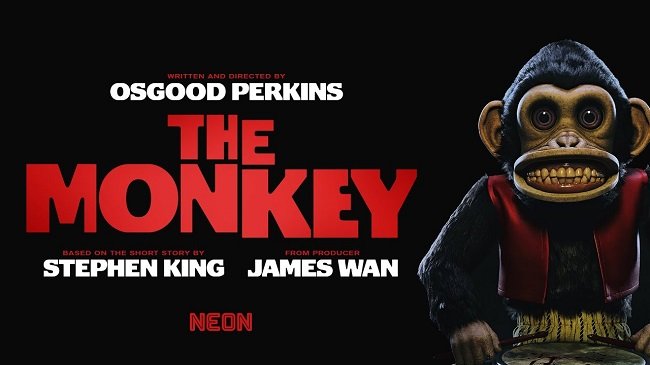Prophecy (1979)
During the seventies, Hollywood started looking to ongoing societal and political concerns as a source of material for movies. Hence, the energy crisis, terrorism and global pollution quickly found themselves being subsumed into hastily written screenplays, in attempt to be topical, commercially successful and relevant. Prophecy based upon a novel by David Seltzer tackled not only the issue of pollution but also the ongoing disenfranchisement of Native Americans. Paramount studios went so far as hiring an established director of note, John Frankenheimer. In many respects this movie should have been a bigger success with a reasonable budget, robust cast and studio support. Sadly it did not fare well, either critically or at the box office due to obvious flaws in the production. Despite his outstanding body work, (Birdman of Alcatraz, The Manchurian Candidate) Frankenheimer was not the best choice of director for a genre movie such as this and he was also going through a period of alcoholism.
Dr. Robert Verne (Robert Foxworth) accepts a job from the Environmental Protection Agency to investigate a dispute over potential pollution between a logging company and a Native American tribe in Maine. Dr. Verne's wife Maggie (Talia Shire) accompanies him on the trip. She is pregnant but has not yet told her husband as he is conflicted about bringing children into such a problematic world. On arrival in the remote logging town, the mill director Bethel Isley (Richard A. Dysart) is inclined to blame all problems on the local Native American community. Especially the disappearance of several tourists and search and rescue workers. However, he extends all possible courtesy to Dr. Verne, showing them around the paper mill plant and providing them with a remote woodland cabin so he can test the water. The local Native American community leaders, John and Ramona Hawk (Armand Assante and Victoria Racimo) appeal to Robert and his wife that they are not a community of drunks but are being poisoned. They tell of illness, premature death and of children born with birth defects. But Ramona’s old grandfather speaks of Katahdin, a spirit that “is part of all things created” who has awakened to protect the tribe.
Being a seventies movie Prophecy is guilty of a practice that is happily not so common these days. Namely, casting actors of the wrong ethnicity into specific roles. Having a “known name” on a movie poster is one thing but it’s somewhat eggerious when a production casts racially appropriate actors for minor roles but does not do the same for major characters. The issue here being Armand Assante, an actor of Italian descent, playing a Native American. Despite this decision, the cast perform well. The relationship between Robert Foxworth and Talia Shire is plausible, although “of the time”, especially in the way that he listens to her but doesn’t hear what she’s really saying. Richard A. Dysart gives a good supporting performance, as the die hard company man. His character reflects a lot of the entrenched prejudices that were all too common at the time. The script introduces several interesting themes such as attitudes on ecology and the risk of a baby with birth defects but these plot lines are sadly abandoned when the monster turns up. Prophecy was also one of the first major studio movies to be filmed in “Hollywood North”. Vancouver became a regular substitute for parts of the US and a centre of film production hence forward.
But the main problem with Prophecy is not so much the inconsistencies in the script, which is a common issue in genre movies but the way the central monster is filmed and revealed. The basic design by The Burman Studios is sound but the way it is lit and shot is not flattering. The Xenomorph in Alien is essentially a man in suit but it is shown in a way that often minimises this. The mutant Bear in Prophecy is not handled with such care. Neither Frankenheimer or his crew had much experience of dealing with these sorts of issues and although the editing by Tom Rolf does much to try and correct the problem, it doesn’t always work. The monster was originally conceived to be a chimera and have attributes of multiple animals; just as a human foetus exhibits similar traits during its development. But this proved potentially too complex, so the scope of the special effects were reduced. Frankenheimer also decided to secure a lower rating and so removed some of the more violent scenes. Hence the movie feels that there is content missing and the gore has been toned down to a minimum.
Prophecy could have been a far better movie under different circumstances. If the Native American aspect of the plot was explored further and there was a degree of ambiguity as to whether the monster was just a mutant or Katahdin the avenging spirit, then the story would have been a little more engaging. The issue of Maggie’s pregnancy and the problems she could face is another aspect of the plot that could have provided more human drama. Then there is the matter of Katahdin itself. Irrespective of the way the special effects were shot, the more violent scenes should have remained in the film. As it stands, the theatrical cut of the movie is a little anticlimactic. However, Prophecy is still entertaining and an interesting reminder of a time when big studios were still prepared to explore the horror genre in different ways, with robust budgets and high production values. Something that doesn’t happen quite as often these days. The ending that hints at a potential sequel naturally didn’t happen.




























